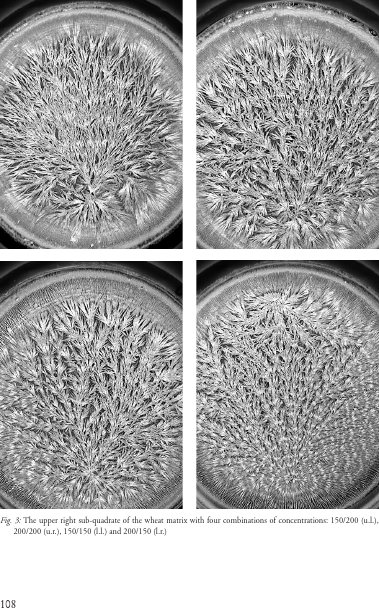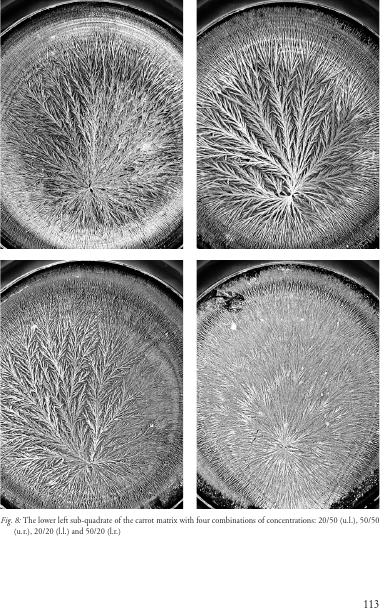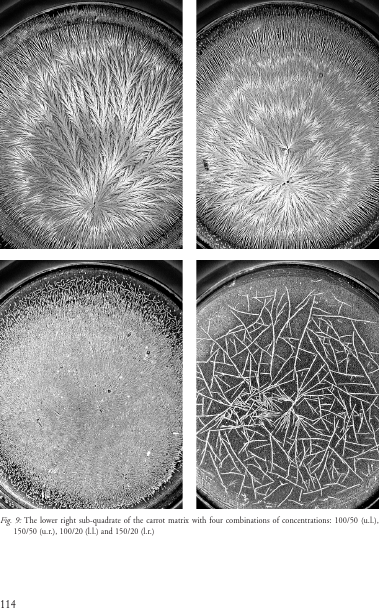A concentration matrix procedure for determining optimal combinations of concentrations in biocrystallization
Export Article Citation as
- Plain text
- BibTeX
- RIS format
- Download price : € 6.00
Abstract:
An integral part of the biocrystallization method is the determination of suitable concentrations of the sample in question and the reagent copper chloride. Traditionally concentrations series are applied whereby an in creasing amount of sample (juice/extract) is added to a fixed amount of reagent (200 mg per solution per plate). At a so-called optimal concentration the resulting pictures show an optimum of desired morphological features which enable differentiation of various samples. These series represent a one-dimensional procedure for deter mining an optimal sample concentration. The article presents the concept of concentration matrix as a two-di mensional procedure for determining an optimal combination of concentrations of the sample and the reagent. Graphically the concentrations of the sample and the reagent are arranged on the horizontal and vertical axes respectively. The optimal combination may generally be determined on the basis of two consecutive matrices. The initial broad matrix is arranged with a broad concentration range of both the sample and the reagent while the subsequent narrow matrix is arranged with a narrower range of concentrations around the expected opti mal combination, as expressed in a near-equilibrium of features characterizing the sample and the reagent. Two broad matrices from wheat and carrot are presented. The procedure is expected to be applicable to a broad va riety of samples and investigations, and to allow efficient differentiation of various samples.








